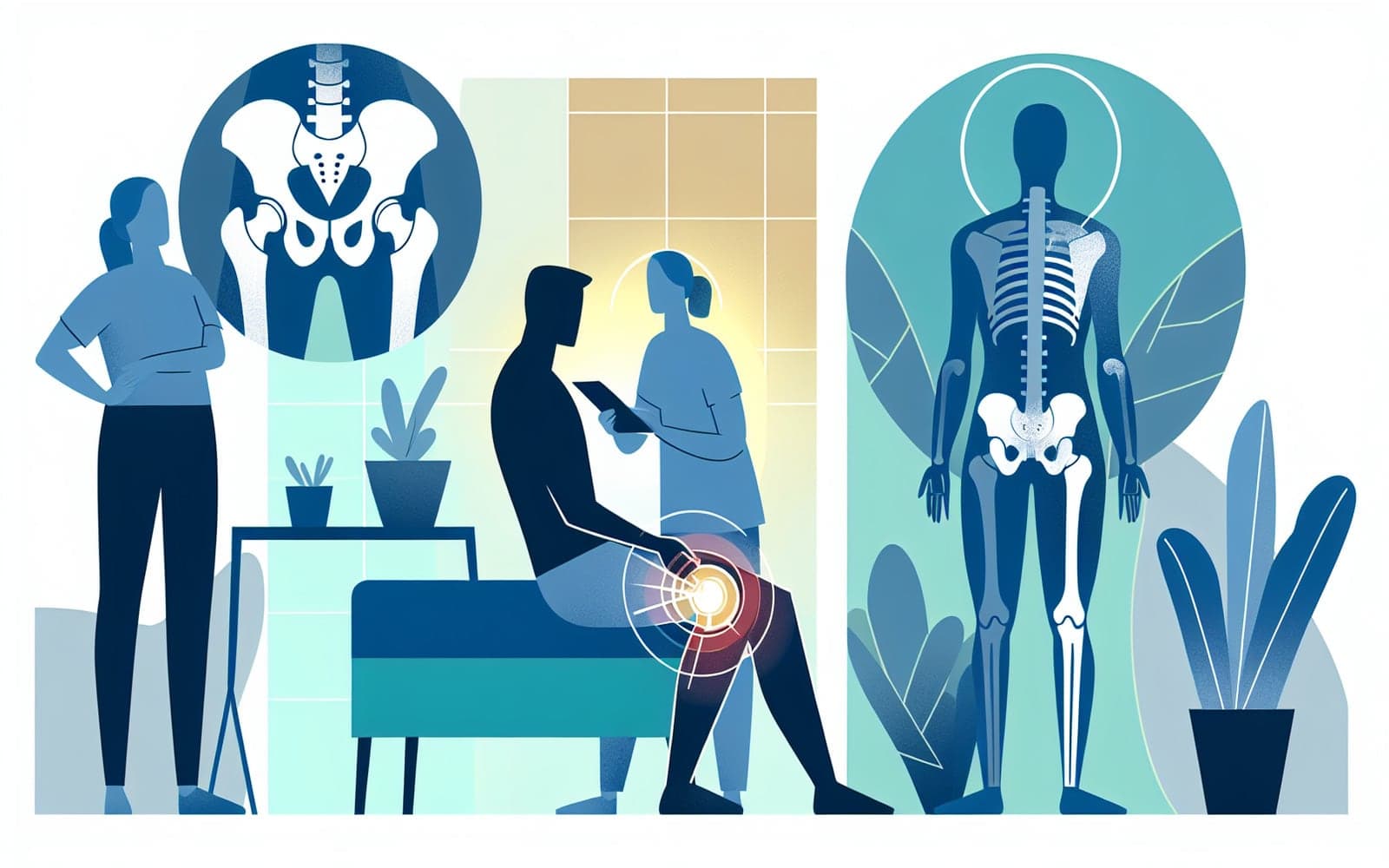Contents
-
Immediate Care: POLICE
-
Rehabilitation Exercises
-
Additional Treatments
-
When Surgery is Needed
Treating Hip Adductor Injuries: From Rest to Recovery
Treating Hip Adductor Injuries: From Rest to Recovery
The Path to Healing
Hip adductor injuries can be painful and frustrating, but with proper treatment, most people make a full recovery. The approach to treatment depends on the severity of the injury and may range from simple rest to surgery in rare cases.
Contents
-
Immediate Care: POLICE
-
Rehabilitation Exercises
-
Additional Treatments
-
When Surgery is Needed
Immediate Care: POLICE
The first step in treating an adductor injury is following the POLICE protocol: Protection, Optimal Loading, Ice, Compression, and Elevation. This helps manage pain and swelling in the first 48-72 hours. Crutches may be needed for severe injuries to avoid putting weight on the affected leg.
Rehabilitation Exercises
Once the acute pain subsides, rehabilitation exercises are crucial for recovery. These typically start with gentle stretching and isometric exercises, progressing to strength training and sport-specific movements. A physical therapist can guide you through an appropriate exercise program tailored to your injury and goals.
Additional Treatments
Various other treatments may be used depending on the injury. These can include massage, ultrasound therapy, and electrical stimulation to promote healing. In some cases, doctors may recommend platelet-rich plasma (PRP) injections to accelerate tissue repair, though evidence for this is still limited.
When Surgery is Needed
Surgery is rarely required for adductor injuries, reserved mainly for complete tendon tears or avulsions (where the tendon pulls away from the bone). Even then, many high-grade injuries can heal with conservative treatment. If surgery is needed, it's typically followed by a longer rehabilitation period.
FAQs
How long does recovery usually take?
Mild strains may heal in 1-2 weeks, while severe tears can take 2-3 months or longer.
Can I still exercise with an adductor injury?
Light, pain-free exercise may be OK, but always consult your doctor or physical therapist first.
Are cortisone injections used for adductor injuries?
Sometimes, but they're typically not first-line treatment due to potential side effects.
Will I need to wear a brace during recovery?
Compression shorts or a groin wrap may help, but rigid braces are rarely used.
Can adductor injuries heal on their own without treatment?
Minor strains may, but proper treatment speeds healing and reduces reinjury risk.
The Road to Recovery
With patience and proper care, most people with adductor injuries can return to their previous level of activity.
Additional References
-
Holmich P, Bradshaw C. Groin Pain. In: Clinical Sports Medicine, Brukner P, Khan K (Eds), McGraw-Hill, Australia 2013. p.549.
-
Serner A, Weir A, Tol JL, et al. Return to Sport After Criteria-Based Rehabilitation of Acute Adductor Injuries in Male Athletes: A Prospective Cohort Study. Orthop J Sports Med 2020; 8:2325967119897247.
-
Ishøi L, Sørensen CN, Kaae NM, et al. Large eccentric strength increase using the Copenhagen Adduction exercise in football: A randomized controlled trial. Scand J Med Sci Sports 2016; 26:1334.
This article has been reviewed for accuracy by one of the licensed medical doctors working for Doctronic.












